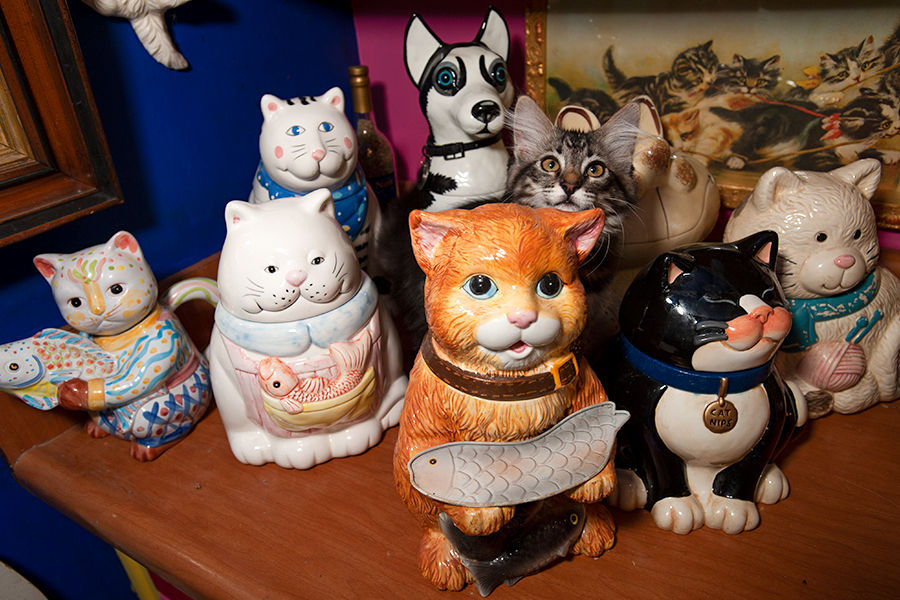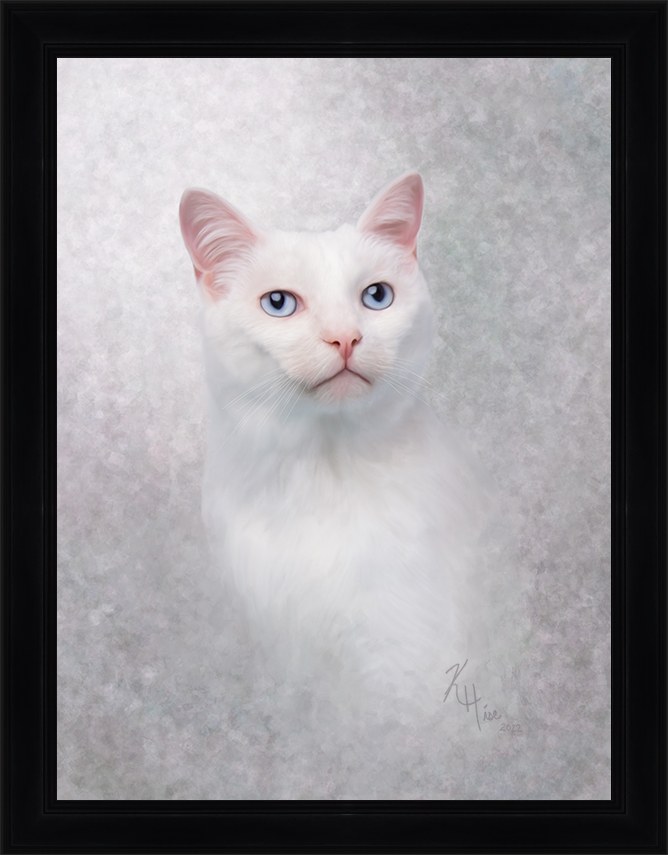Every year, you send out the same holiday cards. Recently, you’ve been getting more photo print cards of entire families and you want to try it out. You need to get everyone to the photography studio, including your cat because, after all, she’s part of your family. You’d love some single shots of kitty, too, because it’s a lasting memory of your furry friend.
Kitty Says, “Not So Fast!”
While some of your family members might not like getting photographed, you probably have one who really does not like getting photographed or made to do anything unless it’s her idea. Yes, your cat will most likely have objections to this fuzzy-feeling family togetherness time.
“It’s a fact. Cats are scaredy-cats! They are always analyzing sounds and motion for potential danger to make a quick getaway, like from car rides or picture-taking sessions,” says Bob Walker, cat-centric author, gallery director, and owner of Bob Walker Photography. “Some felines love being the center of attention. But from my photography experience, they avoid doing what you want them to do.”
His solution for capturing “purr-fect” photos?
“Allow sufficient time to become friends, then distract them with things that they enjoy: treats, feather wands, catnip toys, or string chasing,” he says.
Walker likes to have owners or assistants interact with the cat while the cat is facing the photographer. Meanwhile, Walker gets down on the cat’s level, shooting rapidly to capture expression and action.
If you’re not ready to face taking your cat to a photography studio, you can set up a photo session at home. Enlist a family member or friend with whom your cat is comfortable to elicit your cat’s attention with a favorite toy or treat. Swap toys frequently so your cat doesn’t get bored.
“Patience and tons of photos will be necessary so you can edit out the misses. Share the few that are wonderful,” Walker says.
A Calm Kitty Photographs Better
Krystal Hise, owner/photographer of Krystal Photography and author of the Heart Dog Guided Journal and Tails of the Space Coast, Volumes 1 and 2, specializes in empowering her clients to celebrate the love they share with their heart pets and honor their version of family through photography. She aspires to help pet parents and pet photographers alike embrace the concept of a modern, Fear Free approach to photographing pets.
“The most important thing to keep in mind when photographing any scared cat is that you can’t force anything. Not only is that potentially harmful to the cat, but it also wouldn’t look good in photographs,” says Hise. “To that end, patience is one of the biggest virtues you can have and put into practice during these types of sessions. Patience, kindness, understanding, and communication: those things are key to a successful photo shoot.”
Walker says that fabulous photo sessions often last a few hours. That allows plenty of time to calm the cats, as well as photograph in multiple locations and activities. “Learning what they want and are willing to do is key to a successful session,” he says.
Feline in the Family Portrait
Just because you are holding your cat for the “family” photo(s) doesn’t necessarily mean she will be the perfect angel. Just because she knows you doesn’t mean she is going to sit still and remain calm when the camera button is pushed.
“When the family is involved, things are both easier and harder,” Hise says. “Easier because the cat isn’t necessarily going to just walk away, but can be harder because they may want to hide under their family’s arms or hands.
“This is where I lean into the strengths of knowing what the cat likes. Use treats, toys, or other attention-grabbing items to keep the cat’s attention. While doing that, it’s important to let the family know to pay attention to me and the camera, and smile or be in whatever pose we’re working on,” says Hise. “Unless it’s a safety issue, I let them know it’s my job to get the cat’s attention, so let me worry about that. They can focus on looking at the camera! If that isn’t working for whatever reason, sometimes the best thing to do is to take a small break and set things up again.”
Behind the Camera at Home
The best camera for capturing your cat’s daily lives is the one you have with you. Smartphones are unobtrusive and quiet, Walker says, making them great for kitty photography at home. He says to take lots of pictures and your cats will become accustomed to being photographed.

“My advice for cat-owned people: photograph them when they’re calm. At feeding time, they’re starving, and less likely to sit for photos. After they’ve eaten and washed, they’re ready to catnap,” says Walker, “and often a relaxed time for photo sessions. Every feline is unique. Each has their own restful time and can instantly wake when forced to do what they don’t want to, like having their picture taken.”
Hise says to move slowly and quietly. Don’t get right up in their face if that’s not something they are used to, especially with an object like a phone or camera. Use their preferences for treats, toys, and/or other objects to your advantage.
Is It Possible to Get the Perfect Feline Photo?
“Stay calm yourself and remember that patience is your best friend,” Hise says.
This article was reviewed/edited by board-certified veterinary behaviorist Dr. Kenneth Martin and/or veterinary technician specialist in behavior Debbie Martin, LVT.
Sandra Toney has been writing about cats for over 25 years and is an award-winning member of Cat Writers Association and Dog Writers Association of America. She has written for many print and online magazines about cat health and behavior as well as authoring eight books. She lives in northern Indiana with her cat, Angel.
Want to stay in the loop on the latest and greatest in keeping your pet happy and healthy? Sign up for our free newsletter by clicking here!








